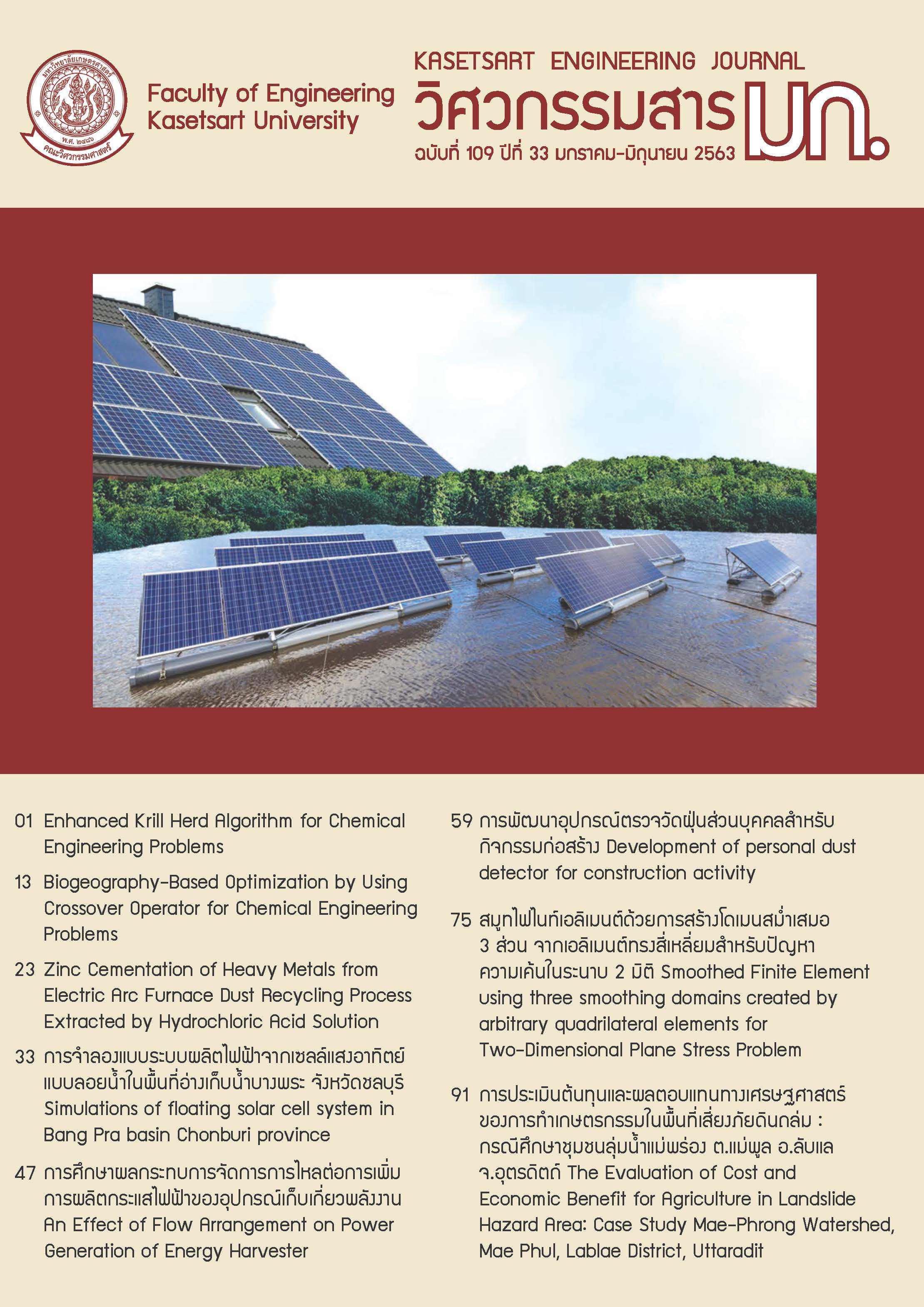การลดโลหะหนักโดยกระบวนการซีเมนเทชันด้วยผงสังกะสีในการบำบัดฝุ่นจากเตาอาร์คไฟฟ้าด้วยกรดไฮโดรคลอริก
Keywords:
Zinc, Cementation, Electric Arc Furnace Dust, Hydrochloric Acid, Heavy MetalsAbstract
The benefits of hydrochloric acid for selective leaching electric arc furnace (EAF) dust has been reported by many authors. Low concentration hydrochloric acid can extract zinc which presence as the majority element contained in the EAF dust while leaving the iron in the solid residue. After extraction, there are also hazardous elements that were leached into an aqueous solution such as lead and chromium. These two elements could affect the efficient currency in the electrolytic cell on the electrowinning process for zinc separation from the solution. Thus, in this study, the cementation process was investigated using zinc powder in order to cement the solute heavy metals in the zinc-rich solution prior to the further process. Then optimal conditions were found to be; Zn/Pb 3.0 molar ratio, the temperature at 60oC, and rotation speed at 500 rpm for 10 minutes. The final solution was very high purity (Pb and Cr concentration < 2 ppm) which was suitable for zinc deposition to produce metallic zinc.
References
Dutra A.J.B., Paiva P.R.P. and Tavares L.M. (2006). Alkaline Leaching of Zinc from Electric Arc Furnace Steel Dust. Minerals Engineering, 19(5): 478-485.
Salihoglu G. and V. Pinarli (2008). Steel Foundry Electric Arc Furnace Dust Management: Stabilization by Using Lime and Portland Cement. Journal of Hazardous Materials, 153(3): 1110-1116.
Lee J., Lin C. and Chen H. (2001). Carbothermal Reduction of Zinc Ferrite. Metallurgical and materials transactions B, 32(6): 1033-1040.
Orhan G. (2005). Leaching and Cementation of Heavy Metals from Electric Arc Furnace Dust in Alkaline Medium. Hydrometallurgy, 78(3): 236-245.
Langová Š., J. Leško, and D. Matýsek (2009). Selective Leaching of Zinc from Zinc Ferrite with Hydrochloric Acid. Hydrometallurgy, 95(3): 179-182.
Polsilapa S., Khamsrisaphap P. and Wangyao P. (2015). Electric Arc Furnace Dust Treatment Process by Iron Powder. Key Engineering Materials, 656-657: 428-433.
Polsilapa S., Intakuean P. and Promboopha A. (2015). The Decomposition of Zinc Ferrite in Electric Arc Furnace Dust by Carbon. Key Engineering Materials, 658: 156-160.
Sriyowong P. (2013). Electric arc furnace dust treatment by calcium oxides from lime. Bachelor’s degree Thesis, Kasetsart University, Thailand.
Polsilapa S., Jaithakul P. and Gulrueang T. (2017). Zinc Recovery from Electric Arc Furnace Dust Using Eggshell. International Journal of Advances in Science Engineering and Technology, 5(4), Special Issue Part 3: 1-4.
Younesi S., H. Alimadadi, E.K. Alamdari, and S. Marashi (2006). Kinetic Mechanisms of Cementation of Cadmium Ions by Zinc Powder from Sulphate Solutions. Hydrometallurgy, 84(3-4): 155-164.
Walton R. (2016). Zinc Cementation, eds. Gold Ore Processing (Second Edition). Elsevier, 553-560.
Lamya R.M. and Lorenzen L. (2005). A Study of Factors Influencing the Kinetics of Copper Cementation During Atmospheric Leaching of Converter Matte. Journal of Southern African Institute of Mining and Metallurgy, 105(1): 21-27.
Nadkarni R.M. and Wadsworth M.E. (1967). A kinetics study of copper precipitation on iron: part II. Transactions of the Metallurgical Society of American Institute of Mining, Metallurgical, and Petroleum Engineers, 239: 1066-1074.
J. Brent Hiskey and Jaeheon Lee (2003). Kinetics of gold cementation on copper in ammoniacal thiosulfate solutions. Hydrometallurgy, 69: 45-56.


